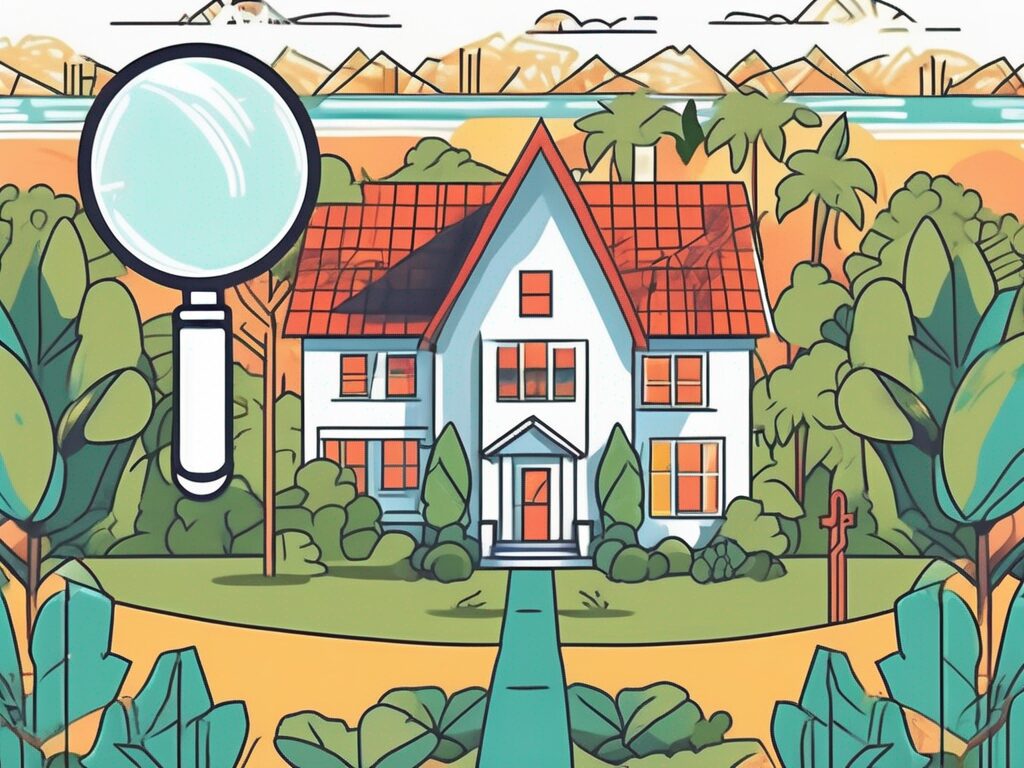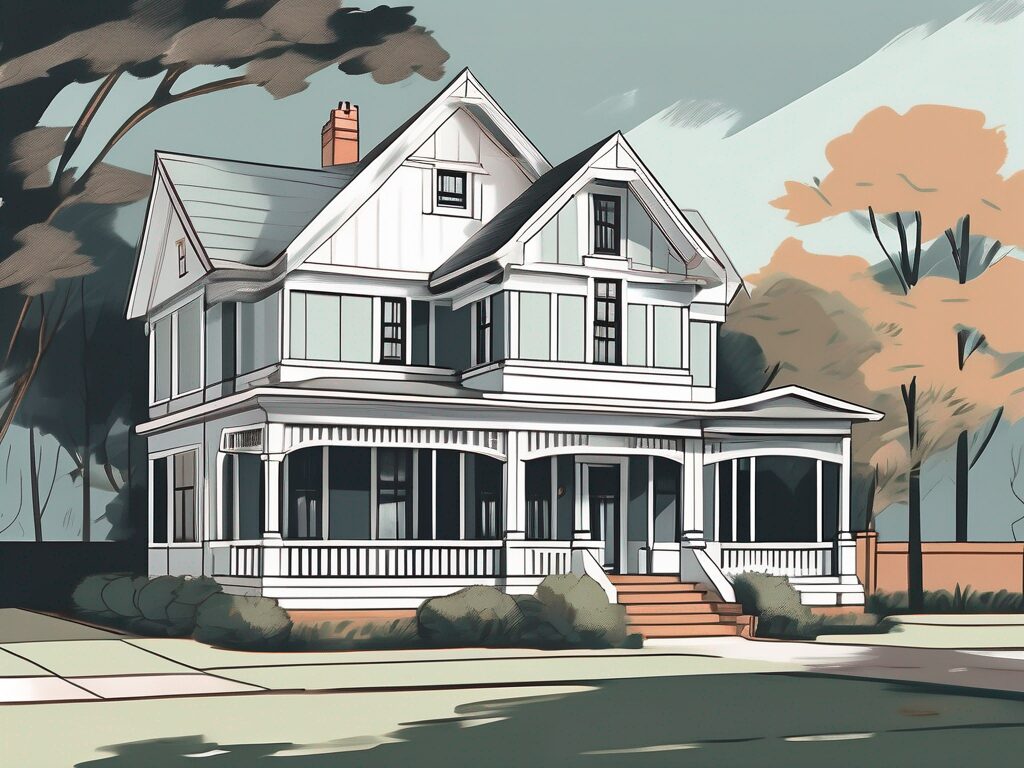
Agent A-Team or Solo Superhero? Finding the Right Real Estate Partner for Your Selling Journey in Wildwood Florida
When it comes to selling your home in Wildwood, Florida,…
January 29, 2024
Historic homes are a treasure trove of charm, character, and timeless style. Restoring these architectural gems not only revitalizes their beautiful features, but it also boosts their resale value. If you’re lucky enough to own a historic home or are considering purchasing one, this article will provide you with expert tips to restore the charm and appeal of these age-old beauties.
Before embarking on any restoration project, it’s essential to assess the condition of the home’s foundation. Over time, foundation issues can arise, compromising the structural integrity of the house. Consulting a professional engineer who specializes in historic homes is imperative in identifying and rectifying any foundation problems.
When it comes to restoring pre-1890 homes, preserving history while enhancing functionality is of utmost importance. These homes hold a unique charm and character that should be carefully maintained throughout the restoration process. Striking a balance between preserving original characteristics and incorporating modern amenities can help create a comfortable living space without compromising historical value.
One aspect to consider when restoring a pre-1890 home is updating the plumbing system. In many cases, these historic homes still have outdated plumbing systems that may not meet modern standards. By updating the plumbing, homeowners can ensure a reliable water supply and prevent potential issues such as leaks or water damage.
Similarly, the electrical system of a pre-1890 home may need to be upgraded to meet current safety standards. Outdated wiring can pose a fire hazard and may not be able to handle the electrical demands of modern appliances and technology. By rewiring the house and installing new electrical outlets, homeowners can ensure a safe and efficient electrical system while preserving the historic charm of the home.
Renovating kitchens and bathrooms is another crucial aspect of restoring pre-1890 homes. These areas of the house often require modernization to meet the needs of contemporary living. However, it is essential to approach these renovations with sensitivity to the original design and materials used in the home. By carefully selecting fixtures and finishes that complement the historic style, homeowners can create a seamless blend of old and new.
Preserving the architectural details of a pre-1890 home is also vital in maintaining its historical value. From ornate moldings and trim to intricate woodwork and stained glass windows, these unique features contribute to the overall charm of the house. Restoring and repairing these elements can be a meticulous process, but it is well worth the effort to ensure the home’s authenticity is preserved.
Lastly, landscaping plays a significant role in restoring the charm of pre-1890 homes. Historical homes often have well-established gardens and outdoor spaces that require careful attention. Restoring the landscaping to its former glory can enhance the overall appeal of the property and create a harmonious connection between the house and its surroundings.
In conclusion, restoring pre-1890 homes requires a thoughtful approach that balances preservation and modernization. By addressing foundation issues, updating plumbing and electrical systems, renovating kitchens and bathrooms, preserving architectural details, and restoring the landscaping, homeowners can breathe new life into these historic treasures while honoring their rich history.
Pre-war homes, built between 1890 and 1940, hold a special place in architectural history. These houses, with their distinctive charm and timeless elegance, are a testament to the craftsmanship and design of a bygone era. However, owning and maintaining a pre-war home comes with its own set of challenges and considerations.
One common issue in pre-war homes is outdated knob-and-tube wiring. This type of electrical system, once considered state-of-the-art, is now considered a safety hazard. Upgrading the electrical systems in these homes to meet modern safety standards is not only crucial for the well-being of the occupants but also for increasing the market value of the property. Hiring a licensed electrician who specializes in working with vintage homes is essential in maintaining the integrity of these architectural gems.
Preserving and highlighting the unique historic features of pre-war homes is also vital in restoring their original charm. These homes often boast exquisite details such as original crown moldings, ornate fireplaces, and elegant staircases. Restoring these features to their former glory not only adds character to the property but also increases its value. Potential buyers who appreciate the timeless elegance of pre-war architecture will be captivated by the intricate craftsmanship and attention to detail that these homes offer.
Restoring a pre-war home requires a delicate balance between preserving its historic integrity and incorporating modern amenities. While it is important to maintain the original character of the house, it is also necessary to update certain aspects to meet the needs of contemporary living. This can include renovating kitchens and bathrooms, installing energy-efficient windows, or adding central heating and cooling systems. Striking this balance ensures that the home retains its historic charm while providing the comfort and convenience expected in modern living.
Another aspect to consider when preserving pre-war homes is the importance of proper maintenance. Regular upkeep, such as repainting the exterior, repairing any water damage, and replacing worn-out roofing, is crucial in preserving the structural integrity of these older homes. Additionally, periodic inspections by professionals specializing in historic homes can help identify and address any potential issues before they become major problems.
When it comes to pre-war homes, it is not just the physical structure that holds value but also the stories and memories that are woven into its walls. These homes have witnessed generations of families, each leaving their own mark on the property. Preserving a pre-war home means honoring its history and the legacy it represents.
In conclusion, pre-war homes from the period of 1890 to 1940 are architectural treasures that deserve to be preserved and cherished. Upgrading electrical systems, restoring unique historic features, finding the right balance between preservation and modernization, and proper maintenance are all essential in ensuring that these homes continue to stand as testaments to the past while providing comfort and joy to future generations.
When it comes to 1950s homes, one crucial aspect to address is electrical safety. Many properties from this era have ungrounded outlets, which pose a significant hazard. Upgrading the electrical system to include grounded outlets not only improves safety but also provides convenience for modern appliances and electronics.
However, delving deeper into the world of 1950s homes reveals a treasure trove of architectural details and design elements that can transport you back in time. From the moment you step through the front door, you are greeted by a sense of nostalgia that is hard to replicate in modern homes.
One of the most iconic features of 1950s homes is their flooring choices. Simplifying flooring choices can be a game-changer when it comes to preserving the nostalgic charm of these homes. Opting for classic materials like hardwood floors or resilient linoleum can give these homes a timeless look.
Hardwood floors, with their warm and inviting tones, add a touch of elegance to any room. The natural grain patterns and rich colors of hardwood create a sense of depth and character that cannot be replicated with other flooring options. Walking barefoot on these floors brings a sense of comfort and nostalgia, reminding you of a time when life was simpler.
On the other hand, resilient linoleum flooring offers a more playful and vibrant option for those who want to embrace the retro ambiance of the 1950s. With its wide range of colors and patterns, linoleum allows homeowners to create a unique and eye-catching look in their homes. From bold geometric designs to whimsical floral patterns, linoleum flooring can truly transform a space into a time capsule of the 1950s.
When choosing flooring for a 1950s home, it’s essential to consider the overall aesthetic and architectural style of the house. Earthy tones, such as warm browns and soft beiges, complement the mid-century modern design prevalent during this era. These colors create a harmonious and cozy atmosphere, evoking a sense of tranquility and comfort.
Alternatively, if you want to make a bold statement, vibrant patterns can be an excellent choice. From checkerboard patterns to abstract designs, these eye-catching floors can become the focal point of any room. The vibrant colors and intricate patterns add a sense of energy and playfulness, capturing the spirit of the 1950s.
So, whether you choose the timeless elegance of hardwood floors or the playful charm of resilient linoleum, embracing the nostalgia of 1950s homes through flooring choices can transport you back in time. It allows you to experience the unique charm and character of this era, creating a home that is both a reflection of the past and a celebration of the present.
Step into a time machine and travel back to the groovy era of the 1960s, where homes were a reflection of the vibrant spirit of the times. However, beneath the nostalgic charm lies a hidden danger – the presence of asbestos and lead-based paint. These hazardous materials were commonly used during this era, posing a significant concern for homeowners.
Asbestos, once hailed as a miracle material due to its fire-resistant properties, was widely used in insulation, floor tiles, and even popcorn ceilings. However, we now know that prolonged exposure to asbestos fibers can lead to serious health issues, including lung cancer and mesothelioma. Similarly, lead-based paint, with its vibrant hues and durability, was a popular choice for homeowners. Little did they know that lead, when ingested or inhaled, can cause severe developmental and neurological problems, especially in children.
Given the potential health risks associated with these hazardous materials, it is crucial for homeowners of 1960s homes to engage professionals who specialize in identifying and safely removing asbestos and lead-based paint. These experts employ advanced techniques and equipment to ensure the protection of occupants and the preservation of the house’s value.
While addressing these safety concerns is of paramount importance, homeowners can also embark on an exciting journey of interior design to revive the charm of their 1960s homes. One way to achieve this is by updating the colors within the space. By opting for modern palettes that complement the architectural style of the home, homeowners can breathe new life into their retro abode.
Earthy tones, such as warm browns and soft beiges, can serve as a solid foundation for the design scheme, evoking a sense of nostalgia for the era. These colors can be paired with vibrant accents, such as pops of mustard yellow or burnt orange, to create a contemporary yet retro atmosphere. The juxtaposition of old and new, classic and modern, can result in a visually captivating space that pays homage to the 1960s while embracing the present.
When it comes to furniture and decor, homeowners can explore vintage stores and online marketplaces to find authentic pieces from the 1960s. Mid-century modern furniture, characterized by clean lines, organic shapes, and sleek materials like teak and walnut, can be the perfect addition to complete the retro revival. Additionally, incorporating retro-inspired patterns, such as geometric prints or bold floral motifs, can further enhance the nostalgic ambiance.
Lighting also plays a crucial role in capturing the essence of the 1960s. Sputnik chandeliers, with their futuristic design and multiple arms extending in all directions, were a popular choice during this era. By incorporating such statement lighting fixtures, homeowners can transport themselves back in time and create a truly immersive experience within their own homes.
As you embark on the journey of reviving your 1960s home, remember to strike a balance between preserving its nostalgic charm and incorporating modern elements. With careful planning, attention to detail, and the right professionals by your side, you can transform your retro abode into a timeless haven that celebrates the spirit of the 1960s while embracing the comforts of the present.
In 1970s homes, one important task is replacing faulty electrical panels. Many houses from this era still have outdated and potentially unsafe electrical systems. Upgrading panels to meet current safety standards is essential for both functionality and resale value.
When it comes to 1970s homes, there are several other areas that may require attention and updates. One common issue is the plumbing system. Over time, pipes can deteriorate, leading to leaks and water damage. By inspecting and replacing old pipes, homeowners can ensure a reliable and efficient plumbing system.
Another aspect to consider in these homes is the insulation. With advancements in technology, insulation materials have greatly improved, providing better energy efficiency. By upgrading insulation, homeowners can reduce energy costs and create a more comfortable living environment.
Restoring the charm of historic homes requires careful consideration and expertise. By addressing foundation issues, enhancing functionality, preserving unique features, and making necessary updates, these houses can regain their lost grandeur.
Foundation issues can be a common problem in older homes, including those from the 1970s. Cracks, settling, and uneven floors can all indicate underlying foundation issues. Hiring a professional to assess and repair any foundation problems is crucial to ensure the stability and longevity of the home.
Enhancing functionality is another important aspect of restoring 1970s homes. Many houses from this era have outdated layouts and limited storage space. By reconfiguring rooms and adding storage solutions, homeowners can create a more functional and modern living space.
Preserving unique features is a key consideration when restoring historic homes. From vintage wallpaper to original light fixtures, these details add character and charm to the house. Careful restoration and maintenance of these features can help retain the authenticity and historical value of the home.
Lastly, making necessary updates is essential to bring 1970s homes up to modern standards. This can include replacing outdated appliances, upgrading heating and cooling systems, and installing energy-efficient windows and doors. These updates not only improve the functionality of the home but also increase its resale value.
Whether you’re a homeowner or potential buyer, incorporating these expert tips into your restoration plans will undoubtedly boost the resale value of these historic treasures. With careful attention to detail and the right professionals by your side, 1970s homes can be transformed into beautiful and functional spaces that honor their past while meeting the needs of the present.

If you want the Richr team to help you save thousands on your home just book a call.
 Book a call
Book a call